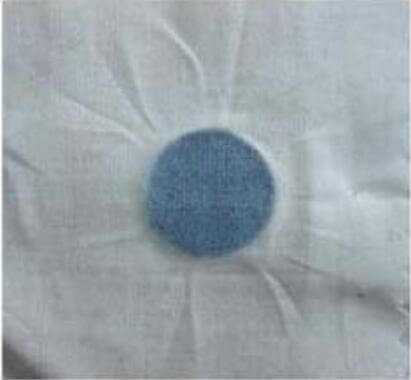Different Colorfast Tests To Crocking

Crocking usually occurs in heavily dyed fabric, such as raw denim. Compared to “bleeding”, where the dye comes into contact with liquid; crocking occurs when the dye is physically rubbed off.
Crocking is one of the processes that helps give raw denim its personality and is the cause for fades and atari on creases, seams, and any other worn areas.
There are many different colorfast tests. Colorfastness is a fabric's ability to retain color in various conditions. Tests are performed that involve wet and dry crocking. Crocking refers to the rubbing off of color from a fabric when subjected to abrasion.
One test is the AATCC 8-2001. This "is a test method of the American Association of Textile Chemists and Colorists (AATCC). This method uses a standard white cotton fabric that is rubbed against the surface of the test fabric. To test for wet crocking the standard fabric is wet before rubbing against the test fabric. After rubbing under controlled pressure for a specific number of times the amount of color transferred to the white test squares is compared to an AATCC color chart and a rating is established."
Grade 5 = no color transfer Grade 1 = high degree of color transfer
Another test is the AATCC 116-2001. This "is a test method of the American Association of Textile Chemists and Colorists (AATCC). This test is specifically used for printed fabrics that do not lend themselves to the AATCC 8-2001 method. The test fabric is held at the base of a Rotary Vertical Crockmeter and rubbed with a standard cotton white fabric either dry or wet. After rubbing under controlled pressure for a specific number of times the amount of color transferred to the white test squares is compared to an AATCC color chart and a rating is established."
Grade 5 = no color transfer
Grade 1 = high degree of color transfer
2019-11-22 10:24

